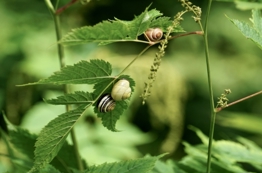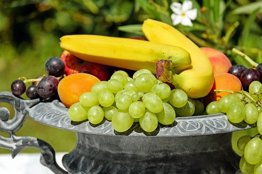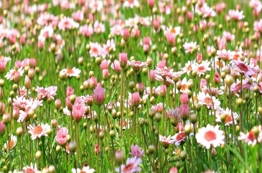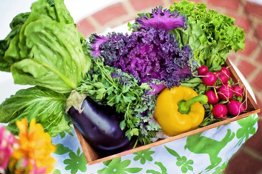Shemitah calendar for vegetables

When does each kind of vegetable have kedushat shevi'it, and when is its' bi'ur time? Appendix C of the Consumer's Guide to Shemitah.
Updated: Cheshvan 5783
|
Vegetable |
Kedushat shevi'it starts[1] |
Sefichin prohibition starts[2] |
Sefichin prohibition |
Bi'ur time |
|
Early Nov. shemitah |
Not sefichin[3] |
NA. |
Early Aug. shemitah |
|
|
Arum |
3 Tishrei shemitah |
Early Jan. shemitah |
Mid-Jan. eighth year |
NA[4] |
|
Asparagus |
3 Tishrei shemitah |
NA. |
NA |
|
|
Baby radish (cherry belle/ cherriette) |
3 Tishrei shemitah |
Early Oct. shemitah |
26 Oct. eighth year (RH Cheshvan 5783-2022) |
NA [4] |
|
Bamiah (okra)[6] |
Not sacred[7] |
Not sefichin[7] |
NA |
NA[7] |
|
3 Tishrei shemitah |
Not sefichin[3] |
NA. |
NA[4] |
|
|
Beet |
3 Tishrei shemitah |
Mid-Dec. shemitah |
Chanukah eighth year (Dec. 19, 5783-2022) |
NA[4] |
|
Broccoli |
3 Tishrei shemitah |
Mid-Nov. shemitah |
Chanukah eighth year (Dec. 19, 5783-2022) |
NA[4] |
|
Butternut squash |
3 Tishrei shemitah |
Early March shemitah |
April 5, eighth year (Pesach 5783-2023) |
Early Oct. eighth year |
|
Carrot |
3 Tishrei shemitah |
Early Dec. shemitah |
Chanukah eighth year (Dec. 19, 5783-2022) |
NA |
|
Cauliflower |
3 Tishrei shemitah |
Mid-Nov. shemitah |
Chanukah eighth year (Dec. 19, 5783-2022) |
NA |
|
Celery |
3 Tishrei shemitah |
Mid-Nov. shemitah |
Chanukah eighth year (Dec. 19, 5783-2022) |
NA |
|
Chard |
3 Tishrei shemitah |
Early Oct. shemitah |
Early Nov. eighth year (Mid- Cheshvan |
NA |
|
Coriander (cilantro) |
3 Tishrei shemitah |
Mid-Nov. shemitah |
Early Nov. eighth year (Mid- Cheshvan |
NA |
|
Cucumber |
3 Tishrei shemitah |
Mid-Oct. shemitah |
Early Nov. eighth year (Mid- Cheshvan |
NA |
|
Dill |
3 Tishrei shemitah |
Mid-Oct. shemitah |
Early Nov. eighth year (Mid- Cheshvan |
NA |
|
Dry onion |
Early Jan. shemitah |
Early Jan. shemitah |
Mid-Jan. eighth year (Mid-Tevet 5783-2023)[5] |
NA |
|
Eggplant |
3 Tishrei shemitah |
Early Nov. shemitah |
Chanukah eighth year (Dec. 19, 5783-2022) |
NA[4] |
|
Fava beans in a pod |
3 Tishrei shemitah |
Mid-Nov. shemitah |
Chanukah eighth year (Dec. 19, 5783-2022) |
Mid-July shemitah |
|
Fennel |
3 Tishrei shemitah |
Mid-Oct. shemitah |
Chanukah eighth year (Dec. 19, 5783-2022) |
NA[4] |
|
Garlic |
Mid-Feb. shemitah |
Mid-March shemitah (Mid-Adar II 5782-2022)[14] |
Late March eighth year (RH Nissan 5783-2023) |
Early Sept. shemitah |
|
Green beans (or yellow) in a pod |
3 Tishrei shemitah |
Early Nov. shemitah |
Mid-March eighth year (Early Nissan 5783-2023) |
NA[4] |
|
Horseradish |
3 Tishrei shemitah |
Early Aug. shemitah |
Chanukah eighth year (Dec. 19, 5783-2022) |
NA[4] |
|
Hot pepper |
3 Tishrei shemitah |
Early Nov. shemitah |
Chanukah eighth year (Dec. 19, 5783-2022) |
NA[4] |
|
Kale |
3 Tishrei shemitah |
Early Nov. shemitah |
Early Dec. eighth year (Early Kislev 5783-2022) |
NA[4] |
|
Kohlrabi (turnip cabbage) |
3 Tishrei shemitah |
Early Nov. shemitah |
Chanukah eighth year (Dec. 19, 5783-2022) |
NA[4] |
|
Lettuce[9] |
3 Tishrei shemitah |
Mid-Sept. shemitah |
26 Oct. eighth year (RH Cheshvan 5783-2022) |
NA[4] |
|
Melon[10] |
3 Tishrei shemitah |
Early Nov. shemitah |
Chanukah eighth year (Dec. 19, 5783-2022) |
NA[4] |
|
Mint |
3 Tishrei shemitah |
Not sefichin |
NA[4] Allowed from Yom Kippur eight year |
NA[4] |
|
Mushroom |
No k.s.[12] |
Not sefichin[8] |
NA |
NA[8] |
|
Paprika |
3 Tishrei shemitah |
Mid-Aug. shemitah |
Early Sept. eighth year (Mid-Elul 5782-2022) |
NA[4] |
|
Parsley leaves |
3 Tishrei shemitah |
Mid-Oct. shemitah |
Chanukah eighth year (Dec. 19, 5783-2022) |
NA[4] |
|
Parsley root |
3 Tishrei shemitah |
Early-Jan. shemitah |
Chanukah eighth year (Dec. 19, 5783-2022) |
NA[4] |
|
Passionfruit |
3 Tishrei shemitah (Sept. 9, 5782-2021) |
NA |
NA. |
NA[4] |
|
Peas in a pod |
3 Tishrei shemitah |
Early Nov. shemitah |
Chanukah eighth year (Dec. 19, 5783-2022) |
NA[4] |
|
Pepper |
3 Tishrei shemitah |
Early Nov. shemitah |
Chanukah eighth year (Dec. 19, 5783-2022) |
NA[4] |
|
Pineapple |
3 Tishrei shemitah |
Not sefichin[3] |
NA. |
NA[4] |
|
Potato |
Early Dec. shemitah |
Early Dec. shemitah |
Chanukah eighth year (Dec. 19, 5783-2022) |
NA[4] |
|
Pumpkin |
3 Tishrei shemitah |
Early May shemitah[8](Early Iyar |
April 5, eighth year |
Mid-Nov. eighth year |
|
Radish |
3 Tishrei shemitah |
Early Oct. shemitah |
Early Nov. eighth year (Mid- Cheshvan 5783-2022) |
NA [4] |
|
Raspberry [4] |
3 Tishrei shemitah |
Not sefichin |
NA |
Late Aug. shemitah |
|
Red cabbage |
3 Tishrei shemitah |
Mid-Nov. shemitah |
Chanukah eighth year |
NA[4] |
|
Scallions |
3 Tishrei shemitah |
Early Nov. shemitah |
Chanukah eighth year (Dec. 19, 5783-2022) |
NA[4] |
|
Spinach |
3 Tishrei shemitah |
Mid-Oct. shemitah |
Chanukah eighth year (Dec. 19, 5783-2022) |
NA[4] |
|
Spring onion |
Mid-Dec. shemitah |
Mid-Dec. shemitah |
Chanukah eighth year (Dec. 19, 5783-2022) |
NA |
|
Squash, zucchini |
3 Tishrei shemitah |
Early Oct. shemitah |
Early Nov. eighth year (Mid- Cheshvan |
NA |
|
Strawberry |
3 Tishrei shemitah |
Mid-Oct. shemitah |
25 Nov. eighth year (RH Kislev |
NA[15] |
|
Sweet potato |
3 Tishrei shemitah |
Mid-July shemitah |
Chanukah eighth year (Dec. 19, 5783-2022) |
Mid-March eighth year |
|
Tomato |
3 Tishrei shemitah |
Mid-Nov. shemitah |
Chanukah eighth year (Dec. 19, 5783-2022) |
NA |
|
Turnip |
3 Tishrei shemitah |
Mid-Oct. shemitah |
Chanukah eighth year (Dec. 19, 5783-2022) |
NA |
|
Watermelon |
3 Tishrei shemitah |
Mid-Nov. shemitah |
Chanukah eighth year (Dec. 19, 5783-2022) |
Early Nov. eighth year |
|
White cabbage |
3 Tishrei shemitah |
Mid-Nov. shemitah |
Chanukah eighth year (Dec. 19, 5783-2022) |
NA |
[1] Vegetables will have kedushat shevi'it when they are harvested during the shemitah year (from 1 Tishrei to 29 Elul).
[2] The time for the sefichin prohibition in the chart is determined by the custom to be lenient for vegetables that began to sprout before shemitah.
[3] Grown commercially as a perennial crop so one need not be concerned about sefichin in the market.
[4] Most vegetables are not subject to bi'ur since they are grown throughout the year in Israel today, so the status of "gone for the animals of the field" does not apply. This includes vegetables that in the distant and recent past were only seasonal. However, there are still some vegetables that are seasonal and there are times when they are not growing in the field. Therefore, the laws of bi'ur do apply to them.
[5] Crops with kedushat shevi'it are not expected to arrive in supermarkets until this date.
[6] There is only a bit of bamiah (okre) grown by Jews, especially on small farms selling directly to customers.
[7] Crops available in the marketplace is grown by non-Jews, yivul nochri. No kedushat shevi'it or sefichin.
[8] There may be small-scale harvest from early January from the Dead Sea and Jordan Valley regions.
[9] Insect-free leafy vegetables growing on detached platforms do not have kedushat shevi'it. The sefichin prohibition does not apply to them.
[10] During the winter; most melons are grown in the Aravah.
[11] Often planted around September. If planted before the end of shemitah the time of bi'ur will be mid-winter.
[12] Mushrooms are not considered plants so the laws of shemitah do not apply to them.
[13] Dates here are for those who view passionfruit as a vegetable (most Sephardi posekim). For those who follow the Ashkenazi custom, see the shemitah schedule for fruit.
[14] Dry garlic arrives only in early March.
[15] Today there are summer crops as well, so they are considered vegetables that are available all year.




